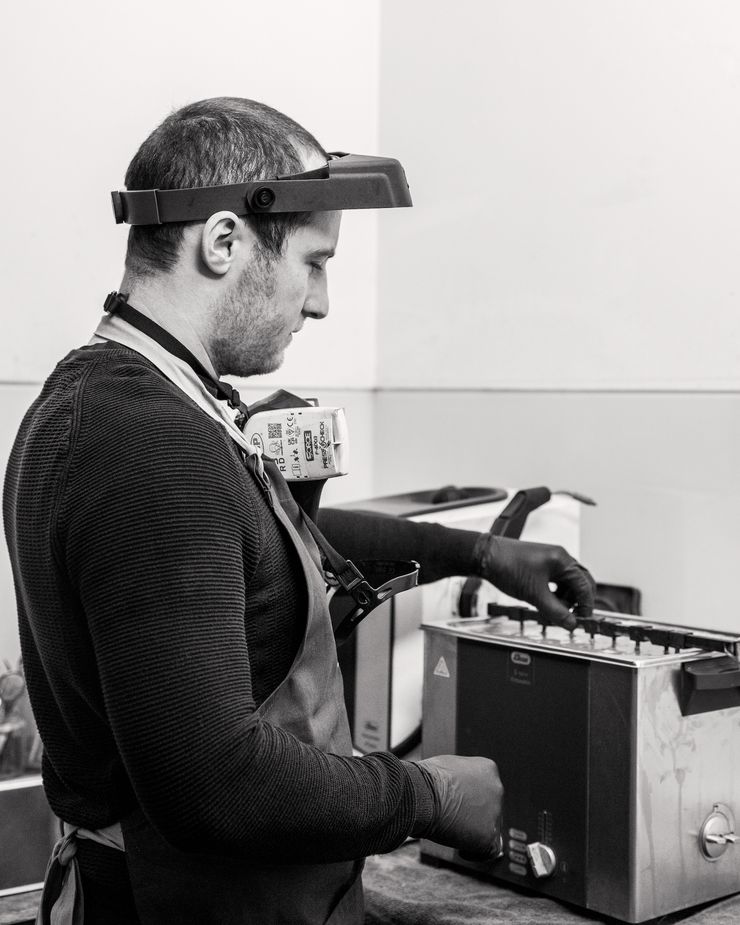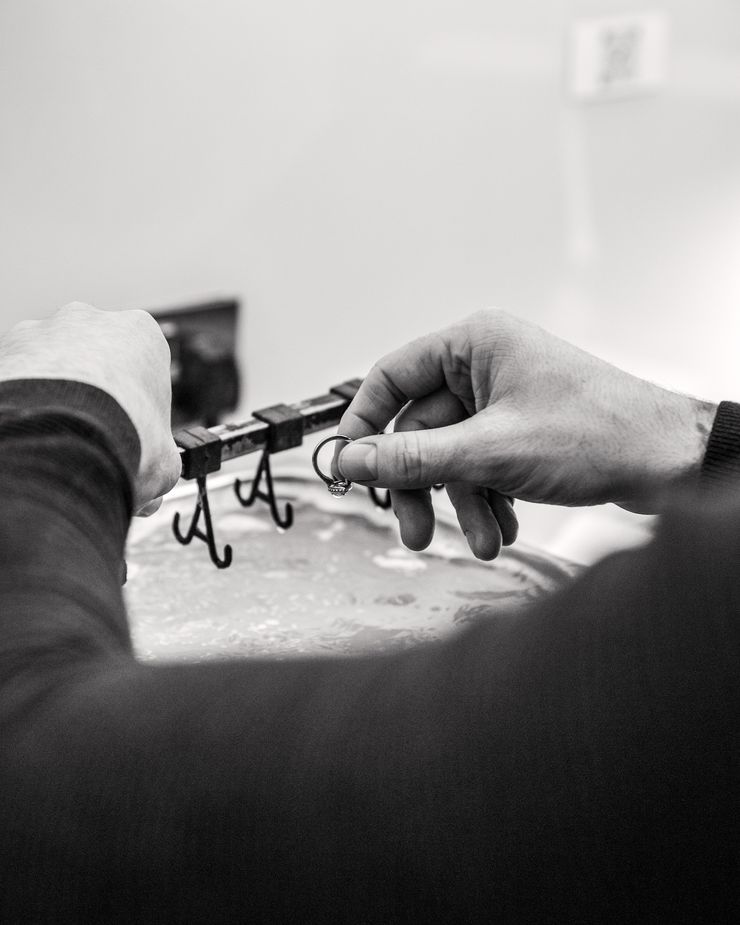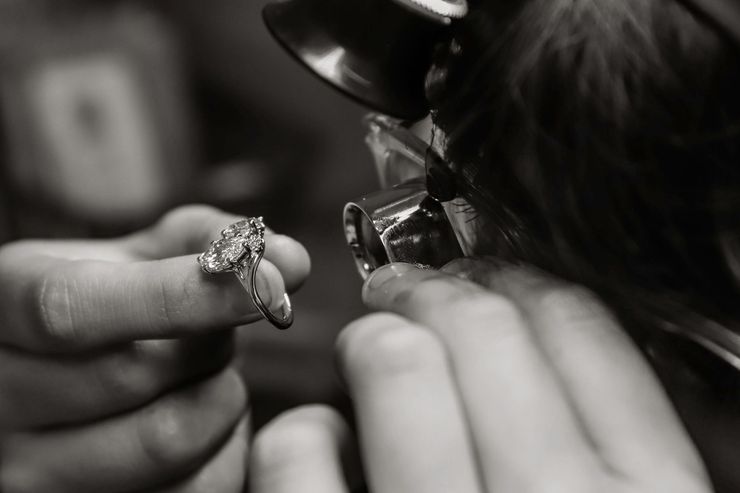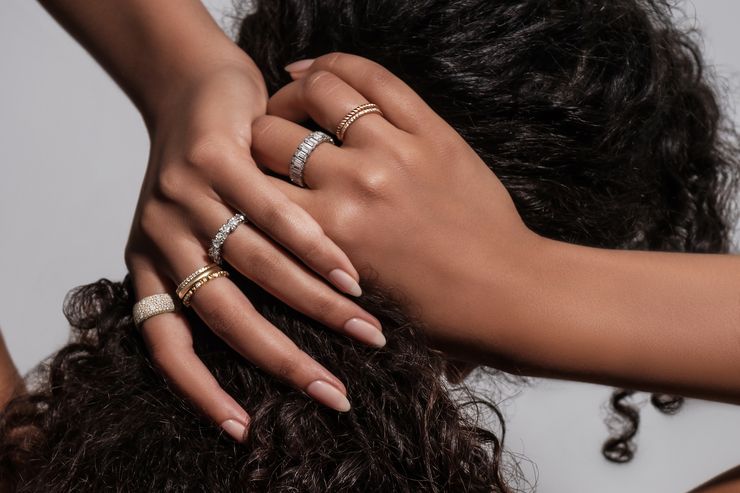Tell us about your position at Taylor & Hart.
As a polisher, I’m in charge of polishing all the jewellery that comes through the workshop. Applying different finishes, like matte or rhodium, and making sure everything’s ready to go through the final stage of quality checks.
Would that mean you’re the last person to handle a piece before it goes to the customers?
I’ll be the last person in the workshop, yes. It’ll come to me and I’ll make sure it’s looking as good as it possibly can. They’ll then go through QC, ready for final approval and then, yes, it’s shipped to the customer.









